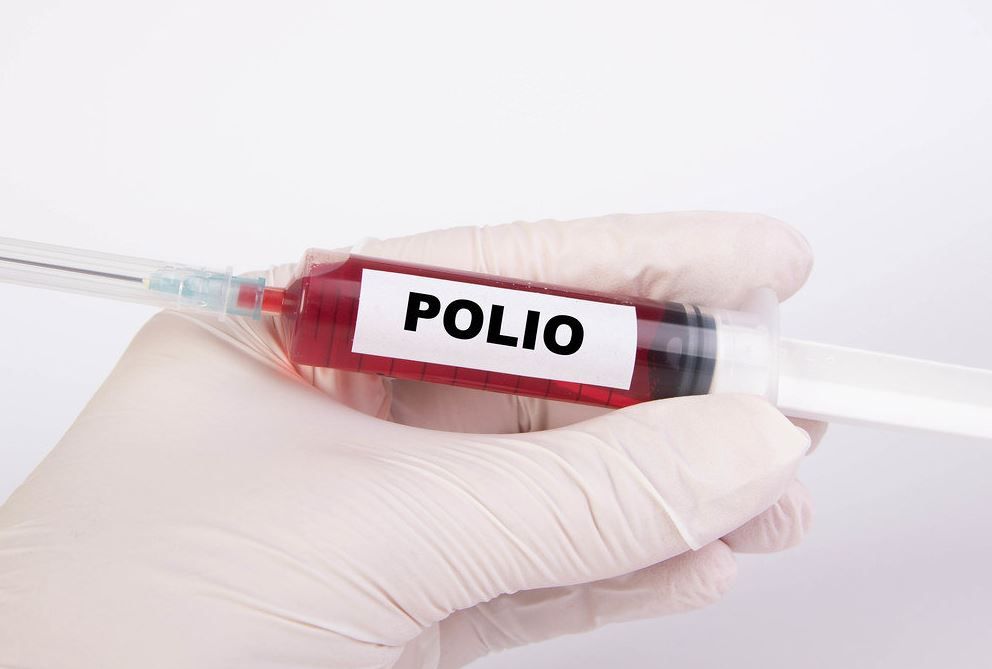According to a recent research from the Centers for Disease Control and Prevention (CDC), polio may have been circulating extensively for a whole year, and it was found in New York’s wastewater as early as April. This information comes from the report.
The virus was found in a wastewater sample that was collected in April in Orange County, New York. The results of the test were positive, which pushed back the earliest known occurrence in the region. A prior announcement made by officials said that the virus was discovered in wastewater samples going back to the month of May in the county adjoining Rockland.
The virus’ genome has undergone various changes, which lead researchers to believe that this particular strain has been in the wild for at least a year in some part of the globe. In March, the virus was identified in Israel, and in June, it was found in Britain. Both of these instances had genetic similarities.
A case of polio was found in the state of New York last month, and authorities stated that a young adult living in Rockland County had been paralysed as a result of the disease. The new research includes further facts from an examination into the case, which is still ongoing. Since 2013, this was the first case of polio to be discovered in the United States.
Joseph Eisenberg, an infectious disease epidemiologist at the University of Michigan, said that the results are not totally unexpected. This is particularly true when considering the fact that polio, which is extremely contagious, often spreads without generating major symptoms.
Previous to this, officials had issued a warning that the patient from Rockland County was most likely only the “tip of the iceberg.”
According to the findings of the current research, just 37 percent of infants under 24 months old who live in at least one of the county’s ZIP codes have been vaccinated against polio with three doses of the vaccine.
According to the findings of the research, the patient was admitted to the hospital in June after acquiring symptoms such as a fever, stiffness in the neck, and paralysis in the lower limbs. The following testing revealed the presence of poliovirus in the patient’s stool, which is the primary route of transmission for the virus.
The patient had been infected with a strain of the virus that was taken from the oral polio vaccination, which includes a weakened strain of the virus. This was discovered by genomic sequencing of the patient’s genome. Since the year 2000, the oral vaccination has not been administered in the United States.
The oral vaccination is both safe and effective, but recipients may continue to excrete the weakened virus in their faeces for many weeks after receiving it, putting others at risk of infection. In places where a large percentage of the population has not received vaccinations, the virus may continue to spread and may ultimately acquire sufficient mutations to become infectious once again.
The finding of the case in Rockland spurred health specialists to start examining wastewater samples gathered in the vicinity. This included testing samples that had previously been collected for the purpose of coronavirus surveillance.
Officials had earlier revealed that they had discovered the virus in 20 wastewater samples collected in Rockland and Orange counties and that all of the samples had been genetically linked to the patient sample. The samples had been taken in Rockland and Orange counties.
According to the findings of the latest research, a 21st sample that had been obtained in Orange County in April was also found to be infected with the virus. On the other hand, there was insufficient genetic information available to make a definite connection between it and the other samples.
According to the findings of the latest research, polio was found in eight percent of the 260 wastewater samples that had been studied up to that point from Rockland and Orange Counties.
Additionally, the virus was discovered in six different wastewater samples collected from New York City.
According to the research, the patient from Rockland County had most likely been exposed to polio somewhere between one and three weeks before displaying symptoms. According to the findings of the investigation, the patient did not go outside of the country during this period but did participate in “a major gathering.”
It was discovered that polio had been present in the wastewater in Rockland County 25 days before the patient displayed symptoms, which suggests that others had been infected earlier.
People who have received three doses of the inactivated polio vaccine are well protected against the virus.
The rate of immunisation against polio is considered to be rather high on a national scale. But there are still parts of the country, particularly New York, that have considerably lower immunisation rates, and the epidemic has put back initiatives to vaccinate children.
According to the survey, just sixty seven percent of children less than 24 months who lived in Rockland County had gotten all three doses of the polio vaccination as of July 2020. That percentage had dropped to sixty five percent by this month.
Immediately after the discovery of the case in Rockland County, the local Health Department launched a vaccination campaign; nevertheless, the researchers noted that the quantity of doses administered “was not adequate to appreciably raise” immunisation rates.
